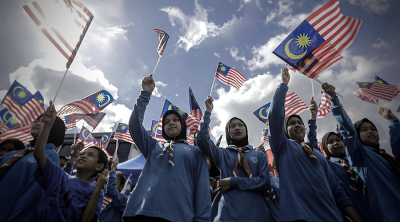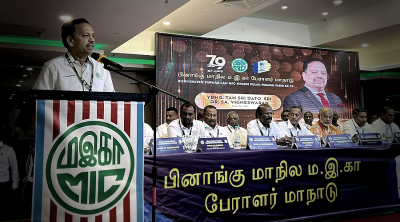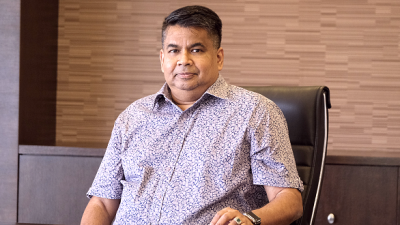
Despite Malaysia’s reputation as a rapidly developing nation, poverty remains a visible and pressing issue.
According to the Department of Statistics Malaysia, the absolute poverty rate reached 6.2 percent in 2022, translating to hundreds of thousands of households living below the poverty line.
The situation is even more dire for certain communities, and the daily struggles of the poor are exacerbated by rising living costs and systemic challenges.
10 top reasons that contribute to the daily misery of the poor in Malaysia
1. Rising prices of essentials
The rising prices of essentials undoubtedly causes a great impact of everyday life.
■ Fuel: Price adjustments of petrol and fuel have a cascading effect, raising the cost of transportation and, consequently, food and goods.
■ Electricity: Tariff hikes in electricity increase household utility bills and production costs for businesses, which are passed on to consumers.
■ Local produce: Weather disruptions and higher logistics costs have made even local produce like fruit and vegetables to be more expensive.
■ Port charges: The proposed increase in fees at major ports like Port Klang may cause increased costs for imported goods. Cooking oil, flour, chicken, eggs, and even school supplies have all seen significant price hikes.
2. Rising cost of living outpaces income growth
The price of basic necessities such as rice, cooking oil, eggs, chicken, vegetables, and fruits, has surged in recent years.
From 2011 to 2024, the price of general food increased by 51.19 percent at urban places and 36.27 percent increase in food price at the rural areas.
For instance, a kilogram of local rice that cost RM2.50 a few years ago now exceeds RM4.00 in some areas.
As a result, the increase in petrol price, electricity tariffs, and would be port charges has a direct impact on household budgets as these increases far outpace wage growth, leaving the poor with less disposable income and forcing many to cut back on nutrition, healthcare, and education.
3. Healthcare accessibility
While Malaysia has a robust public healthcare system, out-of-pocket expenses for medicines, transport to hospitals, and specialist care can be prohibitive for the poor.
Chronic illnesses or disabilities can quickly drain a family’s savings.
4. Housing affordability crisis
The price of homes in urban centers has soared, making home ownership unattainable for many.
Rental costs have also risen, forcing low-income families into overcrowded, substandard housing or informal settlements.
5. Education inequality
Children from poor families often attend under-resourced schools and lack access to tuition, digital devices, or stable internet.
This perpetuates the cycle of poverty, as educational attainment is closely linked to future income.
The increase in school dropouts and those not participating in secondary education, and in addition, the recent absenteeism of 8,076 students from the recent SPM examinations, cited work, family problems and health issues as reasons for not attending the examination.
6. Stagnant wages and precarious employment
While the government raised the minimum wage from RM1,500 to RM1,700 in February 2025, wage growth for many remains sluggish.
A significant portion of the workforce, among many being school dropouts and those from lower-income families, are engaged in informal or gig work with no job security, insurance, or benefits.
This precarious employment means that any financial shock, i.e. a medical emergency, job loss, or even a broken motorcycle, can push families deeper into poverty.
Many school dropouts and those from lower income families enter low-skill, low-wage sectors including manufacturing services and gig economy, where job security and safety are lacking.
For example, an average death of 8 e-hailer’s is a staggering amount to conceive.
Furthermore, economic insecurity including debts and lack of job safety, increases vulnerability to mental health issues and even suicide, the ministry of health states that there are about 10 per 100,000 cases with a notable rise among males since 2014.
7. Urban-rural divide
Poverty is more pronounced in rural areas, especially in Sabah and Sarawak, and parts of Peninsular Malaysia.
These regions often lack access to quality education, healthcare, and infrastructure.
Rural households spend a higher proportion of their income on food and transport, and limited job opportunities force many to migrate to cities, where they may end up in urban slums.
8. Ethnic disparities
Poverty in Malaysia is unevenly distributed. Bumiputera communities, especially in East Malaysia, are disproportionately affected.
While official breakdowns vary by year, studies consistently show higher poverty rates among Malays and indigenous groups compared to Malaysian Chinese and Malaysian Indians.
For instance, in some rural districts of Sabah and Sarawak, poverty rates can exceed 20 percent, while urban Chinese households may see rates below 1 percent.
9. Social protection gaps
Although there are government aid programs, such as Bantuan Sara Hidup and targeted subsidies, gaps remain.
Many urban poor and informal workers fall through the cracks due to bureaucratic hurdles, lack of documentation, or exclusion from eligibility lists.
10. Structural and policy challenges
Corruption, inefficiencies, and policy inconsistencies have hampered poverty alleviation.
For example, subsidy reforms intended to target the needy sometimes result in blanket price hikes, affecting everyone.
Delays in infrastructure projects or social housing also prolong hardship for those in need.
For the poor, these factors translate into daily hardship. Skipping meals or eating less nutritious food is a common phenomenon among the bottom 40 percent of households (B40).
Mitigating poverty: Dealing with the daily misery of the poor
From the perspective of the ordinary Malaysian
1. Community food banks
Neighborhoods can organize food banks; they can follow the US mission Feeding South Florida, providing nearly 100 million meals to over 1 million individuals in a single year, with more than 98 percent of donations going directly to communities served.
Singapore’s Food Pantry stands out for its use of technology; food is distributed through vending machines accessible 24/7 and recipients use a special debit card with monthly credits.
2. Carpooling and ride-sharing
Singapore is the most efficient ASEAN country for carpooling and ride sharing. This is due to its highly regulated technologically advanced and innovative ride hailing ecosystem which includes Grab and TADA as well string electric and hybrid vehicle adoption.
This can help reduce spending on petrol while traveling to and from work or school.
3. Small-scale urban farming
Innovative vertical farming represents a transformative approach to urban agriculture, and Singapore’s Sky Greens stands as a global pioneer in this field.
The Sky Greens system exemplifies how technology, sustainability, and design can converge to address food security and urban land constraints.
The Sky Greens uses modular, A-frame towers that reach up to 9 meters (three storeys) in height.
Each tower houses rows of vegetables that rotate, ensuring all plants receive optimal sunlight and water throughout the day.
This rotation is powered by a patented low-carbon hydraulic system, using as little as 40W of electricity per tower—about the same as a single light bulb.
They produce more than 1000 kg of vegetable daily.
4. Budgeting and debt management
For the ordinary person, effectively budgeting, saving, investing, and planning for both daily needs and long-term goals is the main way to survive.
Good personal financial management empowers individuals to weather emergencies, avoid debt traps, and build a secure future.
Around the world, countries have adopted various strategies to promote financial literacy and inclusion, but some stand out for their results.
Almost daily we hear of the money scammers who cheat and a staggering RM54.02 billion in losses due to scam.
Authorities have identified 208,000 mule accounts holders, many of whom are university students recruited by scammers with cash incentives up to RM1,000 per account.
From the perspective of the responsible government
1. Targeted subsidies
Ensure that fuel and food subsidies reach only the most vulnerable.
2. Affordable housing
Accelerate construction of low-cost homes and improve rental assistance.
3. Progressive wage policies
Continue raising the minimum wage and link it to productivity.
4. Expand social safety nets
Simplify aid application processes and close eligibility gaps.
5. Education reform
Invest in rural schools, digital access, and after-school programs.
6. Healthcare access
Expand mobile clinics and subsidize essential medicines.
Poverty in Malaysia is a multifaceted issue, shaped by rising costs, stagnant wages, structural inequalities, and policy gaps.
While the government has made progress, i.e. reducing the poverty rate from double digits in the 1970s to 6.2 percent today, the daily misery of the poor is a stark reminder that more must be done.
Only with coordinated efforts from both ordinary Malaysians and a responsive government can the cycle of poverty be broken, ensuring a more just and equitable future for all.
(Ravindran Raman Kutty is an active social worker.)
ADVERTISEMENT
ADVERTISEMENT








































